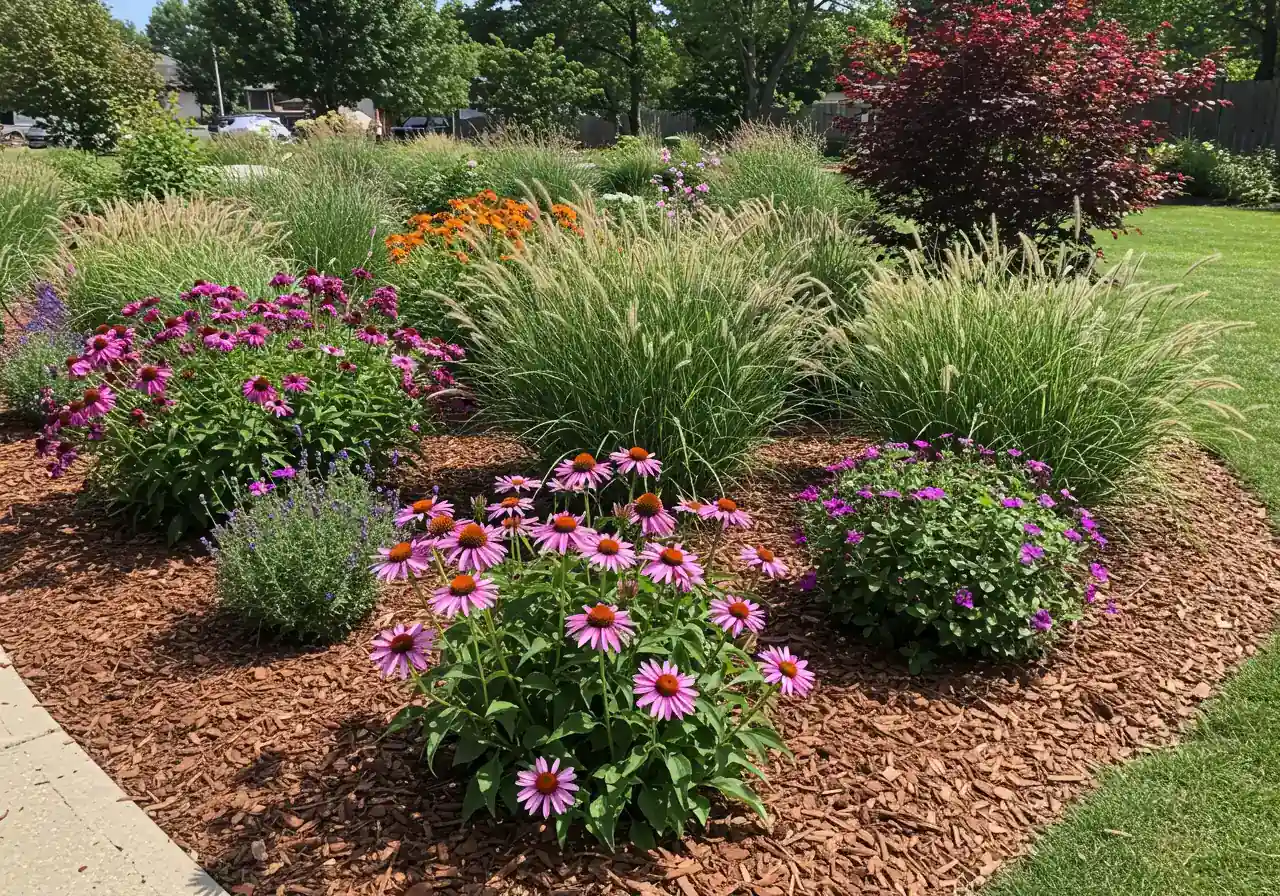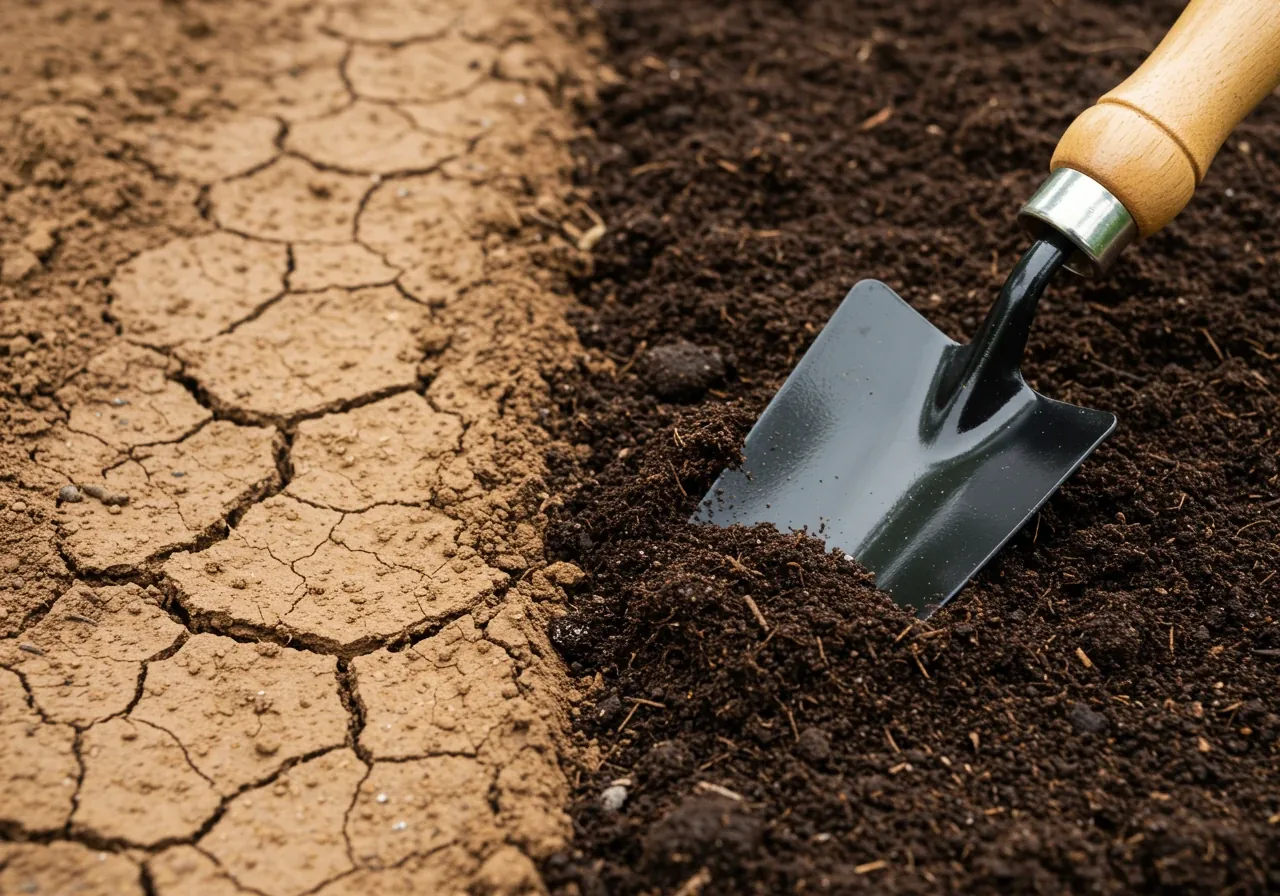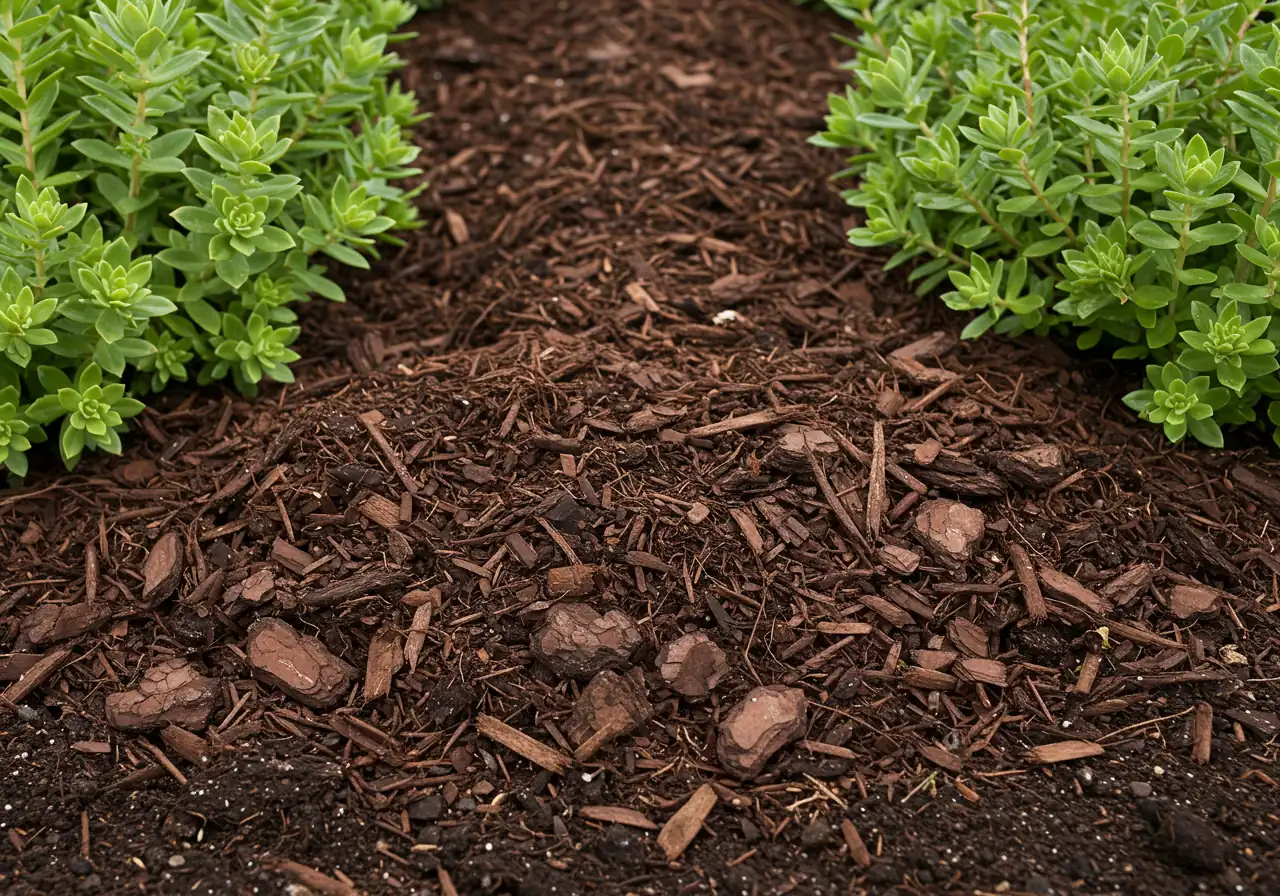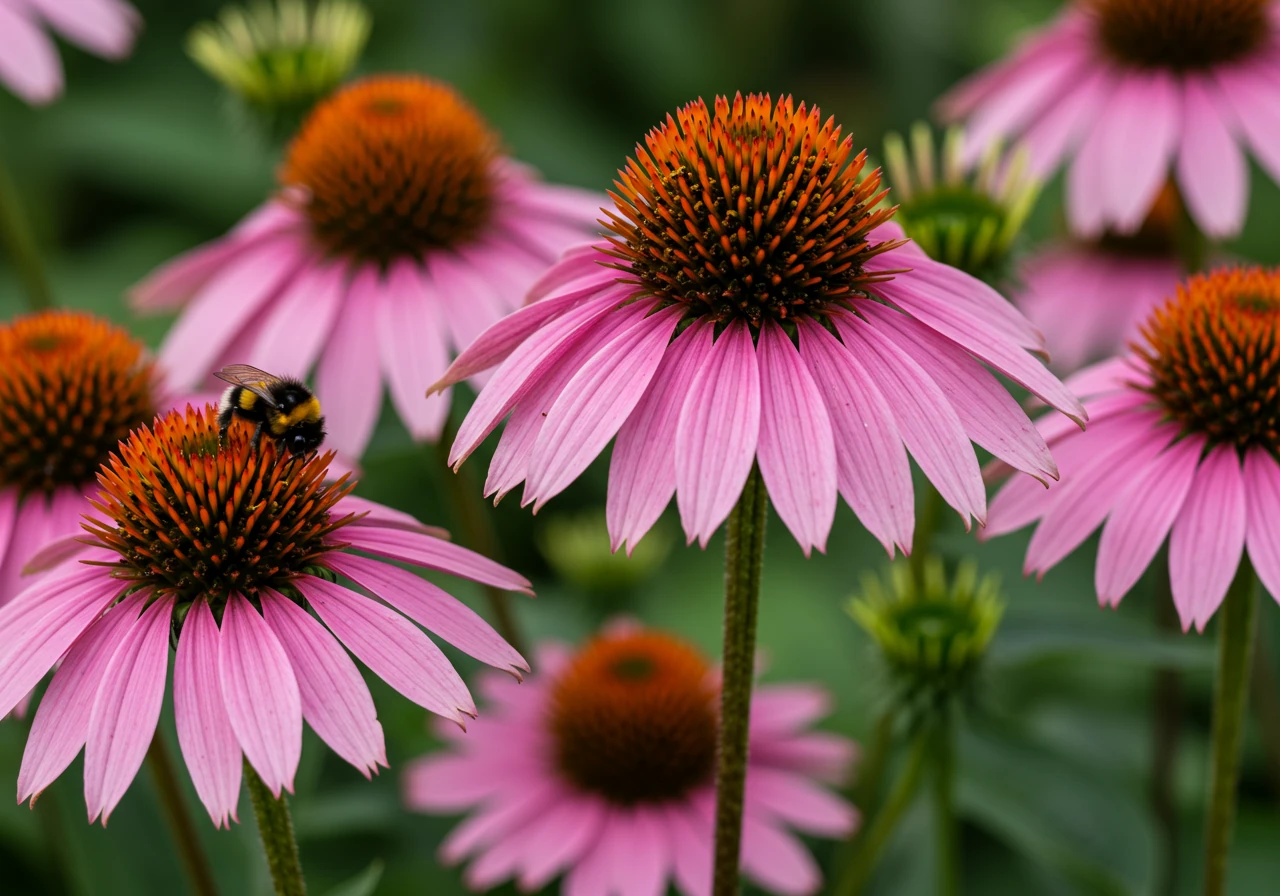Greely Xeriscaping: Save Water & Thrive on Clay Soil
Quick Summary
- Xeriscaping creates beautiful, low-water gardens perfect for Greely’s conditions.
- It’s not just rocks – think vibrant, drought-tolerant plants.
- Key steps include smart design, **improving clay soil** with compost, choosing hardy plants, mulching, and efficient watering.
- Benefits: Save water, reduce maintenance time and costs, and create eco-friendly landscapes.
- Many beautiful perennials, shrubs, and grasses thrive in Ottawa’s climate and tolerate clay.
Ready to transform your yard? Request a free quote today!
Introduction: Beat the Clay & Conserve Water with Greely Xeriscaping!
Hey Greely gardeners! Tired of wrestling with that stubborn clay soil every planting season? Does your water bill make you wince during those dry Ottawa summer spells as you try to keep everything green? You’re definitely not alone! That heavy clay can sometimes feel like you’re trying to garden in, well, actual pottery, and keeping thirsty traditional plants happy can drain your time *and* your wallet, especially here in areas like Greely or nearby Manotick. But what if there was a smarter, more beautiful way to approach your landscaping? Enter *xeriscaping*!
Don’t let the fancy name intimidate you – xeriscaping (pronounced ‘zeer-i-scape-ing’) simply means creating landscapes that require very little extra water from your hose or sprinkler system. It’s all about smart design, choosing beautiful, hardy plants that are well-suited to our local conditions, improving the soil you have, and using efficient watering methods *if* needed. It’s a fantastic approach for our region, helping us conserve precious water *and* work *with* that challenging clay soil, not constantly fight against it. Check out our Google My Business page for reviews from happy clients!
This article is your friendly guide to understanding how xeriscaping can transform your yard into a stunning, lower-maintenance, water-wise oasis right here in the Ottawa area. We’ll dig into the benefits (less watering, less work, happy local ecosystem!), suggest some great plant choices that laugh in the face of clay, and offer practical tips to help you get started on your own water-saving garden journey. Let’s beat the clay and save some water together!
What Exactly IS Xeriscaping? (Hint: It’s Not Just Rocks!)

Okay, let’s clear up a common misunderstanding right away. When some folks hear “xeriscaping,” they picture a barren wasteland of gravel and maybe a lonely cactus shivering in our Ottawa winters. *Nope!* That’s often confused with *zero-scaping*, and while minimal designs have their place, true xeriscaping is way more vibrant, lush, and interesting. Think beautiful, water-smart gardens, not just piles of stone!
Think of xeriscaping as *smart gardening* tailored for our specific climate and conditions, like those found right here in Greely. It’s a landscaping approach built on seven basic ideas, all aimed at creating gorgeous yards that don’t guzzle water. Here’s the scoop on these principles:
- Smart Planning & Design: It all starts here. You figure out how you use your yard, map out sunny and shady spots, walking paths, and consider how water flows – especially important with challenging soil types. Good planning ensures your landscape is both beautiful and functional, potentially even boosting your home’s curb appeal and value, much like considering Greely fall outdoor living design tips can.
- Soil Improvement: Healthy soil is the foundation. Adding organic matter like compost helps heavy clay soil drain better and allows sandy soil to hold more water. Improved soil structure means healthier, more resilient plants that need less supplemental water. Effective Soil Preparation is key.
- Appropriate Plant Selection: This is where the fun really begins! Forget the shivering cactus; we choose beautiful, hardy plants – colourful perennials, interesting grasses, versatile shrubs, and hardy trees – that thrive naturally in the Ottawa region’s climate without needing constant watering once established. Think native species or cultivars adapted to similar environments. You absolutely *can* have flowers, texture, and year-round interest!
- Practical Turf Areas: Xeriscaping doesn’t necessarily mean *no* lawn, but it often involves reducing large, thirsty turf areas. Replace some lawn with garden beds, groundcovers, pathways, or patio space to save water and mowing time. If you do keep some lawn, focus on keeping that smaller area healthy using smart strategies, perhaps borrowing from these Greely lawn care secrets for efficiency, or considering professional lawn care or even sod installation for smaller, targeted areas.
- Efficient Watering: Use water wisely! When plants *do* need watering (especially when getting established), use methods like drip irrigation or soaker hoses. These deliver water directly to the plant roots where it’s needed most, minimizing evaporation and runoff.
- Use of Mulches: Applying a layer of mulch (like wood chips, bark, shredded leaves, or even gravel in specific areas) is a xeriscaping superpower. Mulch helps retain soil moisture, suppresses weeds, prevents soil compaction, and keeps soil temperatures more even. Learn more about our mulching and edging services.
- Appropriate Maintenance: Yes, xeriscapes still need care, but it’s usually *less* demanding than traditional landscaping. Maintenance involves occasional weeding, checking your watering system (if you have one), and basic plant care. This might include seasonal tidying similar to applying Greely garden revival expert fall cleanup tips, and understanding the needs of your specific plants, like knowing the right approach for . Our garden maintenance services can help.
The benefits for homeowners in Greely, Manotick, and across Ottawa are significant. You save *time* (less mowing, watering, fertilizing) and *money* (lower water bills). Plus, you create a beautiful landscape that’s environmentally responsible, conserving precious water resources (check City of Ottawa Water Conservation Tips) and often providing better habitat for local pollinators and wildlife (learn more at Fletcher Wildlife Garden). It’s a true win-win-win!
Ready to see how these principles could transform your own yard? Exploring professional landscaping services can give you ideas and help bring your water-wise garden vision to life. We offer comprehensive Ottawa yard cleanup service to get you started.
Tackling the ‘Greely Gumbo’: Xeriscaping Solutions for Ottawa Clay Soil

Ah, the infamous Ottawa clay soil! If you live in Greely, Kars, or surrounding areas, you know *exactly* what we’re talking about. Sometimes affectionately (or maybe not-so-affectionately) called “Greely Gumbo,” this heavy soil can feel more like potter’s clay than prime garden material. It holds water like a bathtub in spring (hello, soggy roots!), then bakes hard and cracks like desert pavement in summer droughts. Trying to get water to penetrate evenly for your plants can be a real challenge, which seems counterintuitive to xeriscaping’s water-saving goals, right?
But don’t despair! Clay soil isn’t a gardening death sentence; it just requires a smarter approach. In fact, clay soil is often rich in nutrients. The trick is improving its *structure* so plants (and water) can thrive. Here’s how xeriscaping principles help you conquer the clay:
1. Amend, Amend, Amend!
This is your single most powerful weapon against stubborn clay. Adding *organic matter* works wonders. It helps break up the dense clay particles, improving drainage and aeration so roots can breathe and water can penetrate rather than pooling or running off. Think of it like adding tiny sponges and air pockets throughout the soil.
- Your Go-To Amendments:
- Compost: The gold standard! It improves soil structure, adds slow-release nutrients, and boosts beneficial soil life. Spread 2-4 inches over the area.
- Aged Manure: Like compost, it adds nutrients and improves structure. Just make sure it’s *well-rotted* (at least 6 months old) so it doesn’t burn your plants. Use a similar amount to compost.
- Leaf Mold: Decomposed leaves are fantastic soil conditioners, improving both drainage and moisture retention over time. Often free if you make your own!
- How to Do It: The key is to mix the amendments into the top 6-12 inches of your existing soil. Don’t just layer it on top! This takes effort, but it’s crucial for long-term success. If the thought of all that digging makes your back ache, professional Soil Preparation can be a huge help in getting your garden beds ready the right way.

2. Mulch is Your Friend
We mentioned mulch before, but it’s *extra* important for clay. A 2-3 inch layer of organic mulch (like wood chips or shredded bark) does several key things:
- Prevents the soil surface from crusting over and cracking when dry.
- Reduces soil compaction caused by heavy rain or even walking nearby.
- Helps retain moisture evenly in the soil below, meaning less runoff and more water available to plants.
- Suppresses weeds that compete for that precious water and nutrients.
- Breaks down slowly over time, continually adding small amounts of organic matter right where you need it. Proper mulching and edging define garden beds nicely.
3. Go Up! Consider Raised Beds
If you’re dealing with particularly heavy clay or just want to bypass the intense initial amending process, raised beds are a fantastic solution. You can fill them with a high-quality soil mix designed for gardening, providing perfect drainage and structure right from the start. This makes establishing water-wise plants much easier. Planning and building these structures can be part of larger landscaping projects; exploring various landscaping services can give you ideas on incorporating them beautifully into your yard design.
Working *with* your clay soil using these xeriscaping techniques makes gardening in areas like Greely much more rewarding and less water-intensive. And remember, keeping garden beds tidy is part of maintenance – whether you need a dedicated Greely Garden Clean Up Service or help slightly further afield with a Metcalf Garden Clean Up Service, keeping things neat helps your mulch and soil amendments do their jobs effectively. Even a general seasonal spruce-up from an Ottawa Yard Cleanup Service contributes to a healthier, happier, water-wise yard that can handle the challenges of our local soil. Our Property Clean Up services cover many areas including Marionville Yard Cleanup Service and Metcalf Property Cleanup Service.
Xeriscaping can reduce outdoor water use by 50-75% or more compared to traditional lawns once plants are established.
Plant All-Stars: Drought-Tolerant Beauties That Love Ottawa (and Tolerate Clay!)

Alright, let’s talk about the fun part – choosing the plants! You’ve tackled the clay (or you have a plan!), you understand the water-wise approach, now what do you actually *plant*? The good news is, you don’t have to sacrifice beautiful blooms or interesting textures just because you’re gardening in Ottawa’s sometimes challenging conditions. Whether you’re in Nepean, over near Richmond, or further out towards Winchester, there are plenty of gorgeous, tough plants that thrive in our Zone 5 climate and don’t mind getting their roots into that heavy clay soil once it’s been properly prepared.
The key is choosing plants that are naturally adapted to periods of dryness once they’re established. Many native species are fantastic choices because they’ve evolved right here! Forget the delicate divas; we’re looking for the resilient rock stars of the garden world.
Amazing Perennials (Come Back Year After Year!)
- Coneflower (Echinacea): Classic daisy-like flowers (pinks, purples, whites, yellows). Pollinator favourite! Tolerates clay and drought once established. Native varieties are excellent. (Height: 60-120 cm, Blooms: Mid-summer to fall, Water: Low)
- Black-Eyed Susan (Rudbeckia hirta): Cheerful golden-yellow flowers. Very tough, adaptable, self-seeds readily. Native champion. (Height: 60-90 cm, Blooms: Summer to early fall, Water: Low)
- Daylily (Hemerocallis – specific varieties): Many modern varieties are tough, adaptable, offering blooms in nearly every colour. Check labels for drought tolerance. (Height: Varies 30 cm – 1.5 m, Blooms: Varies, Water: Low-Moderate)
- Stonecrop (Sedum – upright varieties like ‘Autumn Joy’): Succulent leaves store water. Late-season interest with large flower heads aging to coppery red. Great winter structure. (Height: 45-60 cm, Blooms: Late summer to fall, Water: Very Low)
Hardy Shrubs (The Backbone of Your Garden)
- Potentilla (Potentilla fruticosa): Long blooming season with small, cheerful flowers (yellow, white, pink, orange). Extremely hardy, tolerates clay, drought, and urban conditions. Low maintenance. (Height/Spread: 60-120 cm, Blooms: Late spring to fall, Water Needs: Low once established)
- More shrub examples could be added here…
Ornamental Grasses (Movement and Texture)
- Feather Reed Grass (Calamagrostis ‘Karl Foerster’): Strong vertical accent with feathery plumes lasting through winter. Very adaptable to different soils, including clay. Doesn’t flop! (Height: 90-150 cm, Blooms: Early summer plumes, Water Needs: Low once established)
- More grass examples could be added here…
Great Groundcovers (Cover the Earth!)
- Creeping Thyme (Thymus serpyllum): Forms a dense, walkable mat. Fragrant foliage, tiny flowers in summer. Needs good drainage (amend clay well or use on slopes). (Height: 5-10 cm, Blooms: Summer, Water Needs: Very low)
- More groundcover examples could be added here…
A Quick Tip: Hydrozoning
When planning your garden beds, think about *hydrozoning*. This simply means grouping plants together that have similar water needs. Put the thirstiest plants (if you have any) in one area, and the super drought-tolerant ones in another. This makes watering (when needed) much more efficient because you’re not overwatering the tough guys just to keep the needier ones happy. Smart, right?
Getting These Beauties in the Ground
Remember, even drought-tolerant plants need regular watering during their first year to establish strong root systems. Proper soil preparation is still key for clay – don’t skimp on adding that compost! Applying a good layer of mulch is also crucial; it helps keep moisture in, weeds out, and improves the soil over time. Consider professional Mulching and Edging to give your beds a sharp look and maximize the benefits.
Feeling overwhelmed by the choices or the work involved? A professional Garden Install service can help you select the perfect plants for your specific site and get them planted correctly. Check out our material selection guide for ideas. Sometimes, preparing the area first requires a bit of muscle, whether it’s removing old landscaping or just a general tidying; services ranging from a full Property Clean Up to a seasonal Ottawa Yard Cleanup Service (or specific services like Metcalf Yard Cleanup Service) can get your space ready. And if you’ve already received a quote for xeriscaping work and want to share your thoughts, companies often appreciate direct Estimate Feedback.
By choosing these plant all-stars, you’ll create a beautiful, resilient garden that saves water, reduces maintenance, and thrives in our unique Ottawa environment. Happy planting!
Your Greely Xeriscape Project: From Plan to Planting
Okay, let’s roll up our sleeves and turn that xeriscape dream into a reality right here in Greely! Transforming your yard into a water-wise oasis might sound like a huge undertaking, but breaking it down into clear steps makes it totally manageable. Whether you’re tackling a patch in Manotick or planning a bigger project over in Barrhaven, this guide will help you navigate from plan to planting.
Step 1: Plan Like a Pro
Know Your Yard: Assess sun, shade, drainage. Sketch your space. Think about use. Dream Big, Start Small? Maybe begin with one bed. Budget Time: Factor in costs for plants, soil, mulch. Get quotes if needed. Use our Xeriscape Project Gallery for inspiration. Feedback on quotes? Use our Estimate Feedback page. We appreciate a Thank You note too!
Step 2: Get Your Hands Dirty – Prep Work
Clear the Slate: Remove unwanted lawn/plants. Consider professional help like Metcalf Property Cleanup Service for big jobs. Soil SOS: Amend clay heavily with compost/manure (top 6-12 inches). Don’t skip! Hardscaping First: Install paths, edging *before* planting.
Step 3: Planting & Finishing Touches
Position Your Players: Arrange potted plants per plan. Adjust before digging. Plant Power: Plant at correct depth, loosen roots, water well. Mulch is Magic: Apply 2-3 inches of mulch (organic or inorganic), keeping space around stems. Consider Material Selection carefully.
Step 4: Water Wisely from Day One
First Year Care: Water new plants regularly (when top 1-2 inches dry) to establish roots. Long-Term Sipping: Once established, water deeply but infrequently. Check soil first! Consider drip irrigation.
And that’s the roadmap! Take it one step at a time, enjoy the process, and soon you’ll have a gorgeous, water-saving Greely garden to be proud of. Happy Xeriscaping!
Keeping it Great: Low-Maintenance Xeriscape Care Through Ottawa’s Seasons
So, you’ve planned, prepped, and planted your amazing water-wise garden – high five! One of the best perks of xeriscaping is that “low-maintenance” isn’t just a buzzword; it’s reality. But “low” doesn’t mean *no* maintenance. Think of it like having a well-behaved pet – mostly independent, but still needs a little attention to stay happy and healthy through our distinct Ottawa seasons. Good news? It’s usually *way* less work than traditional gardening! Here’s a seasonal peek at keeping your xeriscape looking sharp:
Spring Spruce-Up (April-May):
As the snow finally melts (hooray!), it’s time for a gentle wake-up call for your garden.
- Cleanup: Rake away leftover leaves/debris. Cut back ornamental grasses and dead perennial stems. An Ottawa Garden Clean Up Service or a Marionville garden clean up service can help.
- Mulch Check: Top up mulch to maintain a 2-3 inch layer.
- Weed Patrol: Pull early weeds while small.
- First Sips (Maybe): Usually no extra water needed unless very dry or for new plants.
Summer Serenity (June-August):
This is prime time for enjoying your xeriscape – and relaxing more! Your water-wise plants are built for this.
- Water Wisely: Water established plants *infrequently* but deeply. Check soil moisture first! Much less demanding than typical lawn care.
- Weeding: Spot-weed as needed. Mulch helps immensely.
- Observe & Admire: Enjoy the blooms! See mature examples in our Completed Project Gallery.
Fall Tidy-Up (September-October):
Time to gently prepare the garden for its winter rest.
- Light Cleanup: Rake leaves off beds. Leave sturdy stems/seed heads for winter interest/wildlife.
- Weeding: Final thorough weeding.
- Water Check (If Needed): Deep water if fall is dry, especially evergreens, before ground freeze. Consider Rideau Valley Conservation Authority condition statements.
Winter Rest (November-March):
Put your feet up – your garden is mostly sleeping!
- Admire the Structure: Enjoy dormant plant shapes against the snow.
- Snow Patrol (Optional): Gently brush heavy snow off vulnerable evergreens.
- Dream & Plan: Plan next year’s tweaks or additions.
And that’s the rhythm of low-maintenance xeriscape care! It’s mostly about observation and timely, minimal intervention. If you ever have specific questions about maintaining your xeriscape garden, feel free to Contact Us. We’re happy to help. And rest assured, any personal details you share are handled respectfully according to our Privacy Policy. Enjoy the beauty and ease of your water-wise Ottawa garden! Check our Terms and Conditions for service details.
Quick Xeriscape Wins for Your Ottawa Yard
Want easy water savings in your Ottawa yard, perhaps in Barrhaven, without a full landscaping redo? You bet! Try these quick xeriscape wins:
- Mulch Magic: Add 2-3 inches of mulch to garden beds. Cuts evaporation, smothers weeds.
- Smart Sipping: Water established plants deeply, less often. Check soil first!
- Super Swap: Replace one thirsty plant with a tough beauty like Coneflower or Sedum.
- Catch the Rain: Install a rain barrel. Free water!
- Fix the Drip: Check outdoor taps/hoses for leaks.
These simple tweaks can simplify your ongoing Garden Maintenance and kickstart some pretty impressive Yard Transformations over time. Even basic prep like getting garden beds tidy for mulching, often handled by teams like our Marionville Yard Cleanup Service or Metcalf Yard Cleanup Service, makes a difference. Got questions about starting small with xeriscaping? Feel free to Contact Us!
FAQs: Your Greely Xeriscaping Questions Answered
It *can* be, especially if you’re improving soil extensively, buying lots of plants, or adding features like pathways. However, think long-term! You’ll save significantly on water bills, fertilizer, and potentially mowing costs year after year. Consider it an investment that pays back in lower maintenance and resource use. While initial project costs vary, our approach, which you can learn more about by reading about our company values, focuses on creating sustainable, long-term value for your Greely property.
Absolutely not! Xeriscaping often involves *reducing* thirsty lawn areas, not necessarily eliminating them entirely. Keep a smaller, practical patch of healthy grass where you need it (maybe in Barrhaven where the kids play!), and replace other turf areas with beautiful, water-wise garden beds, groundcovers, or patios. It’s about finding the right balance for your lifestyle and our Ottawa climate.
Organic mulches like shredded bark or wood chips are usually fantastic choices here. They help retain moisture, suppress weeds, moderate soil temperature swings common in Ottawa, *and* slowly break down to improve that heavy clay structure over time. Applying mulch is key for success. Whether you DIY or get help prepping the beds first from a team like our Marionville garden clean up service or Ottawa garden clean up service, maintaining a 2-3 inch layer is vital.
The trick is choosing plants rated for Zone 5 or colder – many native and hardy adapted species are built tough! Once established, most xeriscape plants recommended for our region handle winter just fine without fussy protection. Leaving sturdy stems and grasses standing provides natural insulation and winter interest. Come spring, clearing away winter debris is simple, though if the cleanup seems daunting, an Ottawa property cleanup service can give your garden beds a fresh start.
Generally, well-maintained xeriscapes featuring diverse plantings are welcomed! However, it’s wise to check the City of Ottawa’s property standards bylaws (you can search on ottawa.ca). These mainly address things like tall weeds or grass height limits (if keeping some lawn). Pure rock gardens *might* raise eyebrows in some areas, but diverse, intentional xeriscapes are usually fine. When in doubt, a quick check with the city is best.
You’re in luck! Many excellent nurseries in the Ottawa area, including near Greely and Manotick, specialize in native plants, perennials, and shrubs suited to our climate and soils. Look for tags indicating drought tolerance and suitability for Zone 5. Finding the right plants is key; local garden centers are great resources. Our existing clients can also discuss specific plant lists or project updates through the convenient customer portal.
Quick Plant Reference (Examples)
| Plant Name | Type | Water Needs (Established) | Clay Tolerant? |
|---|---|---|---|
| Coneflower (Echinacea) | Perennial | Low | Yes |
| Black-Eyed Susan (Rudbeckia) | Perennial | Low | Yes |
| Stonecrop (Sedum ‘Autumn Joy’) | Perennial | Very Low | Yes |
| Potentilla | Shrub | Low | Yes |
| Feather Reed Grass | Grass | Low | Yes |
Conclusion: Create a Beautiful, Water-Smart Landscape in Greely
So there you have it! Creating a stunning, water-smart landscape in Greely isn’t just a pipe dream – it’s a completely achievable goal, even with our notorious clay soil. As we’ve seen, xeriscaping is your secret weapon for a yard that’s not only beautiful but also kinder to your wallet *and* the environment. Imagine less time dragging hoses around and more time actually enjoying your gorgeous garden! It’s all about smart planning, choosing the right *tough-as-nails* plants that thrive in Ottawa’s climate, and improving that soil structure so roots can breathe easy.
Ready to transform your outdoor space in Greely, Kars, Vernon, or Kenmore into a resilient, low-maintenance oasis? Don’t let the “Greely Gumbo” get you down! Let’s chat about how xeriscaping principles can work for *your* specific yard and help you achieve the beautiful, sustainable landscape you deserve.
- Get inspired: Browse our project gallery to see what’s possible. See amazing yard transformations!
- Learn more: Explore our range of professional landscaping services designed for Ottawa conditions, from garden installation to full property clean up.
- Take the first step: Contact Us today for a friendly consultation or book your estimate online and let’s start planning your beautiful, water-wise future!

